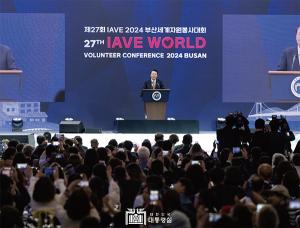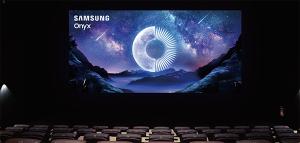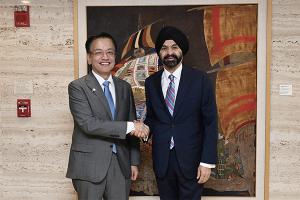 |
||
Plastics make up the largest volume of recycled waste, and according to the Ministry of Environment*s 2022 Environmental Statistics Yearbook, the recycling rate of plastic municipal waste separated into recyclable resources in Korea in 2021 was 56.7%, higher than the EU*s 40.6% in the same year. If you look at the numbers, South Korea*s resource recycling seems to be very well organized and connected. However, this is an optical illusion because the Ministry of Environment considers incineration to be recycling, which is not recognized in Europe. Last year, researchers at Chungnam National University recalculated the recycling rate in South Korea using European standards and found that it was only 16.4 percent, meaning that more than twice as much waste plastic is burned, emitting pollutants and greenhouse gases.
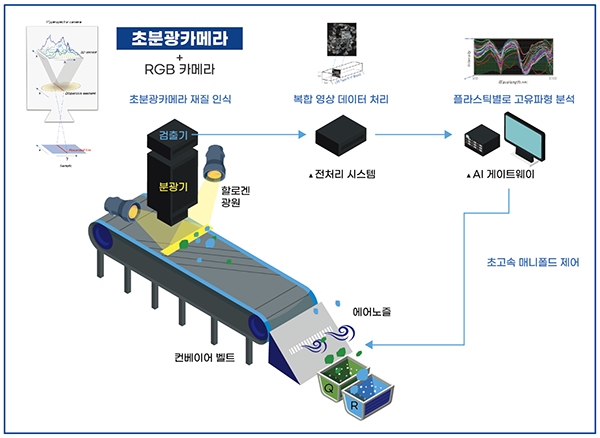 |
Woorim ICT’s hyperspectral sorting system is an innovative solution to increase the recycling rate of waste plastics
Using a hyperspectral camera and artificial intelligence, it can sort up to 30 types of PET, PS, PP, PE, etc.
The Korean government plans to increase the recycling rate of waste plastics by 10 percent by 2026, with separate discharge of recyclables and establishment of a system for recycling and virtuous circulation of plastics as the main strategies. Experts however say it is necessary to build a more advanced resource recycling system. The recycling process for waste plastics is very complex. After collection, it is washed, crushed, and delivered to the final recycler in the form of flakes, all of which require multiple sorting processes. To ensure the purity of the pellets, a lot of money and time is spent on highly inefficient processes, and there is a constant need to reduce the economic burden. In addition, the amount of single-use plastics is increasing rapidly, making it difficult to keep up with the volume, let alone improve accuracy. Therefore, there is an urgent need to improve the sorting system along with the expansion of waste plastic processing capacity. A hyperspectral sorting system developed by Woorim ICT is being hailed as an innovative solution to increase recycling rates. A hyperspectral camera is a camera that takes pictures in the infrared region, which is invisible to the human eye. Whereas RGB cameras look at the 400-800 nm SWIR (Short Wavelength Infrared) band, hyperspectral cameras can see wavelengths of light between 950 and 1700 nm. The company’s hyperspectral cameras acquire object accuracy from 256 spectral bands and use artificial intelligence and deep learning to infer the individual characteristics of various plastics, which are complex polymer compounds. It also analyzes each plastic’s unique type through complex image data processing and sorts the plastics by type using ultra-fast monofold control. The sorted plastics are then blown through an air nozzle to sort waste plastics of various components such as PET, PS, PP, PE, etc. by type, and technically, up to 30 types can be sorted.
 |
Hyperspectral plastic sorter perfectly sorts at least 95% of plastic recycling waste
It improves the working environment and greatly increase the efficiency and accuracy of their work
The company has launched Sort Bottle and Sort Flake, a plastic sorter that utilizes hyperspectral sorting, with all technology developed in-house, from hardware to software. Plastic sorters utilize hyperspectral cameras and artificial intelligence to sort and categorize raw plastic materials. It sorts plastic waste by material in real-time and automatically sorts through air, and can sort plastic containers such as PET, PS, PP, and PE, as well as scrap metal and aluminum cans, and waste materials such as Styrofoam and glass bottles. Hyperspectral big data analytics analyzes the composition of a substance by taking images in milliseconds (ms). It can receive and analyze images as fast as 300 images per second, and since it analyzes the molecules of the substance itself, it can classify plastic bottles with high accuracy even if they contain contaminants such as water. Various plastic sorting technologies have been developed in the past, but due to technical limitations, all cases containing foreign substances were discarded. The company’s hyperspectral plastic sorter is said to perfectly sort any plastic recycling waste with an accuracy rate of more than at least 95% and is so fast that it can completely replace the traditional process of manual sorting by human labor. Industry experts believe that hyperspectral plastics sorters will bring a new paradigm to the current sorting system, as most recycling sorting plants are currently underdeveloped, requiring extensive labor and posing a constant risk of safety accidents. Woorim ICT CEO Kim Do-hoon says “In the actual government-run recycling centers, the biggest burden is the cost of labor and the efficiency of the work. Due to the labor-intensive and inefficient sorting system, they are running large deficits every year, and the local government bears all the burden. On the other hand, the profits of private companies are growing every year. By utilizing our hyperspectral sorting system with its fast working speed and high accuracy, it is possible to improve the working conditions of the workers and significantly increase the efficiency of their work. This will significantly reduce the operating costs of government sorting centers and allow them to operate in the black.”
 |
The crushing plastic sorter sorts plastic bottles, appliances, toys, and even flakes.
It can sort over 50 kilograms per hour with an accuracy of over at least 95%.
Woorim ICT’s crushed plastic sorting machine is also the first plastic flake sorting machine in Korea that has been developed with its own hardware and software. Currently, the sorting system operated by government offices cleans and sorts plastic waste in its raw form before handing it over to collectors, who then sort it once again to improve the quality. This redundant sorting process continues to increase the time and economic burden. Woorim ICT’s Shredded Plastic Sorter is the perfect solution to this problem. The Crushed Plastic Sorter is an artificial intelligence solution that accurately sorts and classifies crushed plastics, including plastic bottles, as well as small plastic flakes obtained by crushing household appliances and toys. It sorts with a high accuracy rate of over at least 95%, and if the flakes are passed through the sorter a second time, the accuracy rate increases to over 99%. The throughput is also very high. A single sorter can process at least 500 kilograms of material per hour, which is enough for most municipalities to digest all the plastic waste generated within their jurisdiction if it runs 12 hours a day. It can sort plastic containers such as PET, PS, PP, PE, ABS, and PVC, as well as scrap metal and aluminum cans, styrofoam, and glass bottles. It uses a camera that analyzes the 900-1700 nm SWIR (Short Wavelength InfraRed) wavelength band, but the company is developing a mid-wavelength band hyperspectral camera that can sort 2900-4200 nm SWIRD, which will allow it to sort even black plastic flakes with high accuracy in the future. Kim says “The long-standing domestic resource recycling process is very inefficient. We developed the crushed plastic sorting machine because we thought that we needed a process system that went beyond the existing process system. We expect to significantly increase the recycling rate through a fast and accurate ONE-STOP sorting system from collection to sorting.”
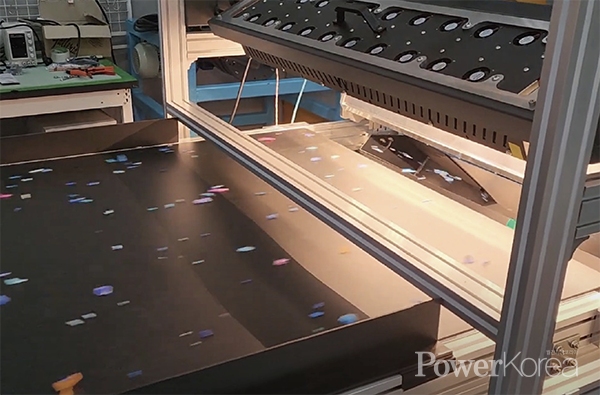 |
Shredding type RVM and label papers can collect with or without the lid
One of the most recent attempts to collect waste plastics efficiently around the world is the Reverse Vending Machine (RVM). This is a system that rewards people for collecting empty plastic bottles with a machine called a reverse vending machine. It has already been successfully established in developed countries and is being installed everywhere in Korea. The government recommends that you remove and dispose of labeling paper properly. Especially label paper, if it is not separated, it cannot be collected. The collected waste plastics are compressed and stored inside the RVM, and then transported to the sorting center, where they are sorted by humans. The reason why the RVM uses the compression method rather than shredding is that there is no way to sort the plastic after it is shredded. Woorim ICT’s hyperspectral shredded plastic sorter enables the use of shredded RVMs and allows for the collection of all waste plastics, with or without labeling and lids. Not only does this increase the collection rate of waste plastics, but as mentioned earlier, it also allows for more efficient sorting at the recycling center. Kim says “We expect our sorting systems to be the link between discharge and collection, collection and transportation, and sorting and classification. In particular, sorting technology is essential for the initial collection, as well as at the sorting plant, and it is also necessary to verify quality at the final stage of processing. We are currently promoting a project to apply it to some stages of the recycling process with the goal of building an urban resource recycling ecosystem, and we plan to gradually expand the scope of the project to apply it to the entire process.”
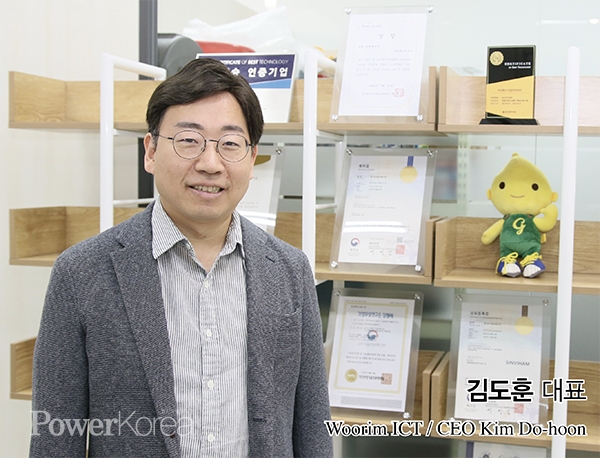 |
Introducing an automated plastic sorting system at the recycling center to establish a resource circulation tracking and management platform
Woorim ICT has been recognized for its excellent technology and achievements by developing a hyperspectral sorting system made with domestic technology for the first time in Korea. The company won the top prize at the 2020 Novel Venture Contest, was selected for the ‘Stepping Stone Startup Project’ by the Ministry of SMEs and Startups, and was selected as an outstanding company in Lotte Chemical’s ‘Project Loop’ project and the TIPS project by the Ministry of SMEs and Startups. The company’s products are currently installed and operating nationwide. The company plans to build a “resource recovery system” by installing an automated plastic sorting system at its own separate collection sites, mainly in apartments and large buildings, to process the collected plastic to the crushing stage and recover it. To this end, the company is developing a range of minispectral cameras, building a containerized waste integrated sorting solution as the basis for a regional sorting system, and materializing a recycling revenue through the manufacture of recycled pellets. Kim says “The sorting technology of crushed plastic can be utilized as the basis for ensuring the purity of recycled plastics. We also aim to build a resource circulation traceability management platform that can record the source and purity of recycled plastic by tracing its history from the point of sorting to prove its quality.”
신태섭 기자 tss79@naver.com

